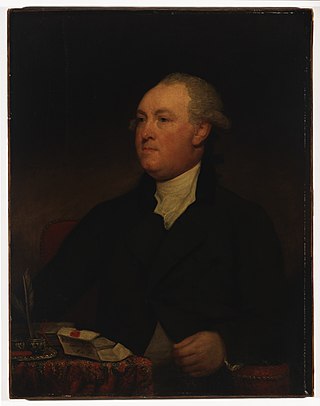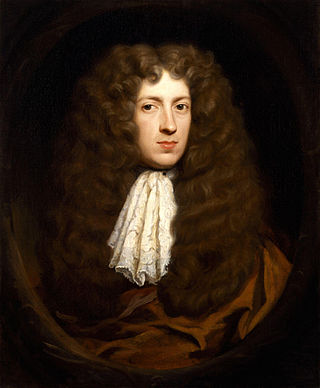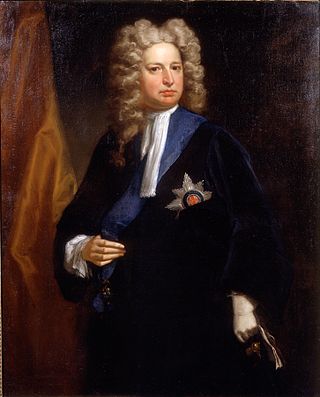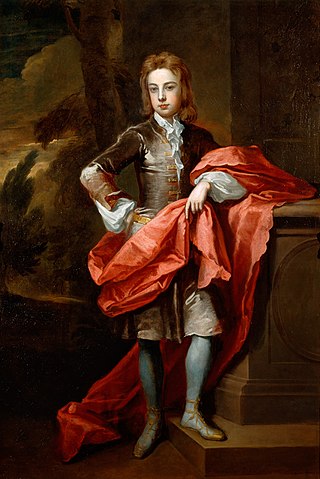Related Research Articles

Anne was Queen of Great Britain and Ireland following the ratification of the Acts of Union on 1 May 1707, which merged the kingdoms of Scotland and England. Previous to this, she was Queen of England, Scotland, and Ireland from 8 March 1702.

Charles Townshend, 2nd Viscount Townshend, was an English Whig statesman. He served for a decade as Secretary of State for the Northern Department from 1714 to 1717 and again from 1721 to 1730. He directed British foreign policy in close collaboration with his brother-in-law, prime minister Robert Walpole. He was often known as Turnip Townshend because of his strong interest in farming turnips and his role in the British Agricultural Revolution.

Thomas Townshend, 1st Viscount Sydney was a British politician who sat in the House of Commons from 1754 to 1783 when he was raised to the peerage as Baron Sydney. He held several important Cabinet posts in the second half of the 18th century. The cities of Sydney in Nova Scotia, Canada, and Sydney in New South Wales, Australia were named in his honour, in 1785 and 1788, respectively.

William Legge, 1st Earl of Dartmouth, was Lord Privy Seal from 1713 to 1714. He was a Hanoverian Tory, supporting the Hanoverian succession following the death of Queen Anne.

Robert Harley, 1st Earl of Oxford and Earl Mortimer, KG PC FRS was an English statesman and peer of the late Stuart and early Georgian periods. He began his career as a Whig, before defecting to a new Tory ministry. He was raised to the peerage of Great Britain as an earl in 1711. Between 1711 and 1714 he served as Lord High Treasurer, effectively Queen Anne's chief minister. He has been called a prime minister, although it is generally accepted that the de facto first minister to be a prime minister was Robert Walpole in 1721.

This is a list of the principal Ministers of the Crown of the Kingdom of England, and then of the Kingdom of Great Britain, from May 1702, at the beginning of the reign of Queen Anne. During this period, the leaders of the ministry were Lord Godolphin and the Duke of Marlborough.
The First Whig Junto controlled the government of England from 1694 to 1699 and was the first part of the Whig Junto, a cabal of people who controlled the most important political decisions. The Junto was reappointed twice following the elections of 1695 and 1698.

Sir John Fenwick, 3rd Baronet was an English Army officer and politician. He succeeded to the Fenwick baronetcy after the death of his father, Sir William Fenwick. A supporter of the Jacobite cause, Fenwick was involved in a conspiracy to assassinate William III of England, and was executed by beheading in 1697 as a result.

Thomas Wharton, 1st Marquess of Wharton, PC was an English peer and Whig politician. A man of great charm and political ability, he was also notorious for his debauched lifestyle.

The 2nd Parliament of Great Britain was the first British Parliament to actually be elected, as the 1st Parliament of Great Britain had been drawn from the former Parliament of England and Parliament of Scotland.
The Whig Junto is the name given to a group of leading Whigs who were seen to direct the management of the Whig Party and often the government, during the reigns of William III and Anne. The Whig Junto proper consisted of John Somers, later Baron Somers; Charles Montagu, later Earl of Halifax; Thomas Wharton, later Marquess of Wharton, and Edward Russell, later Earl of Orford. They came to prominence due to the favour of Robert Spencer, 2nd Earl of Sunderland and during the reign of Queen Anne, Sunderland's son, the 3rd Earl succeeded his father. Opponents gave them the nickname "the five tyrannising lords". Other figures prominent around the edges of the Junto include Sir John Trenchard and Thomas Tollemache.

James Vernon was an English Whig politician who sat in the English and British House of Commons between 1679 and 1710. He was Secretary of State for both the Northern and the Southern Departments during the reign of William III.

The Harleyministry was the British government that existed between 1710 and 1714 in the reign of Queen Anne. It was headed by Robert Harley and composed largely of Tories. Harley was a former Whig who had changed sides, bringing down the seemingly powerful Whig Junto and their moderate Tory ally Lord Godolphin. It came during the Rage of Party when divisions between the two factions were at their height, and a "paper war" broke out between their supporters. Amongst those writers supportive of Harley's government were Jonathan Swift, Daniel Defoe, Delarivier Manley, John Arbuthnot and Alexander Pope who clashed with members of the rival Kit-Kat Club.

James Vernon the Younger was a British government official, courtier, diplomat and Whig politician who sat in the House of Commons from 1708 to 1710. He was an envoy to Denmark from 1702 to 1707.
William Chaloner was a serial counterfeit coiner and confidence trickster, who was imprisoned in Newgate Prison several times and eventually proven guilty of high treason by Sir Isaac Newton, Warden of the Royal Mint. He was hanged on the gallows at Tyburn on 22 March 1699.

The Chatham ministry was a British government led by William Pitt, 1st Earl of Chatham that ruled between 1766 and 1768. Because of Pitt's former prominence before his title, it is sometimes referred to as the Pitt ministry. Unusually for a politician considered to be Prime Minister, Pitt was not First Lord of the Treasury during the administration, but instead held the post of Lord Privy Seal.
John Pulteney, of St James's, Westminster and Harefield, Middlesex, was an English lawyer and Whig politician who sat in the English and British House of Commons from 1695 to 1710.

George Barclay led an unsuccessful attempt to ambush and kill William III and II of England, Scotland and Ireland in early 1696.

Edward Ashe of Heytesbury, Wiltshire was an English landowner, and Member of Parliament for Heytesbury for 52 years, from 1695 to 1747.

The Impeachment of Robert Harley, Earl of Oxford was a legal process in the Kingdom of Great Britain in 1715 when the former First Minister Robert Harley, Earl of Oxford was impeached and sent to the Tower of London. Harley was accused of a number of crimes including high treason during his time in office, with charges particularly focusing on his role in the 1713 Peace of Utrecht which ended the War of the Spanish Succession.
References
- Seccombe, Thomas (1901). . In Lee, Sidney (ed.). Dictionary of National Biography (1st supplement). Vol. 2. London: Smith, Elder & Co.
- Alsop, J. D. "Gregg, William (bap. 1673, d. 1708)". Oxford Dictionary of National Biography (online ed.). Oxford University Press. doi:10.1093/ref:odnb/11450.(Subscription or UK public library membership required.)
- Gregg, Edward Queen Anne Yale University Press 1980
- Hamilton, Elizabeth The Backstairs Dragon- a life of Robert Harley, 1st Earl of Oxford Hamish Hamilton 1969